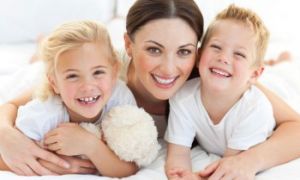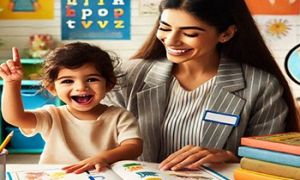This is a guide for educators on what to observe under each sub-learning outcome from the MTOP Framework when a child is engaged in play and learning. Educators can plan experiences for the curriculum and gain an understanding of how children can achieve each individual outcome.
Outcome 1: Children And Young People Have A Strong Sense Of Identity
Children and young people feel safe, secure and supported
This is evident when children and young people, for example:
- establish and maintain respectful, trusting relationships with other children and young people and educators
- use effective routines to make predicted transitions
- sense and respond to a feeling of belonging
- openly express their feelings and ideas in their interactions with others
- respond to ideas and suggestions from others
- initiate interactions and conversations with trusted educators
- confidently explore and engage with social and physical environments through relationships and play
- initiate and join in play and leisure activities
- feel safe to participate in all activities regardless of gender
- share spaces and resources safely and equitably with other genders/groups
- have access to resources that support cultural diversity and family structures
- can share their stories about Aboriginal and Torres Strait Islander history and culture
- can use home languages
- can identify a number of trusted people they can talk to about what upsets them, makes them uncomfortable or sad.
Children and young people develop their autonomy, interdependence, resilience and sense of agency
This is evident when children and young people, for example:
- participate in a range of freely chosen play and leisure opportunities
- demonstrate awareness of the needs and rights of others
- are open to new challenges and discoveries
- demonstrate awareness of the opinions of others about their efforts
- increasingly cooperate and work collaboratively with others
- take considered risks in their decision-making and cope with the unexpected
- recognise their individual achievements and the achievements of others
- demonstrate a capacity for self-regulation, negotiating and sharing behaviours
- persist when faced with challenges and when first attempts are not successful
- display a willingness to achieve to the best of one’s ability
- show initiative by seeking information and asking questions
- learn how to stand up for themselves in appropriate ways.
Children and young people develop knowledgeable, confident self-identities and a positive sense of self-worth
This is evident when children and young people, for example:
- feel recognised and respected for who they are
- explore different identities and points of view in play and discussions
- develop a wider sense of the diverse values and beliefs held by others
- develop strong foundations in both the culture and language/s of their family and of the broader community without compromising their cultural identities
- develop their social and cultural heritage through engagement with Elders and community members
- reach out and communicate for comfort, assistance and companionship
- celebrate and share their contributions and achievements with others
- acknowledge and celebrate Aboriginal and Torres Strait Islander traditions, customs and celebrations
- share their stories about their Country and community
- develop a positive sense of cultural identity amongst children and young people, including Aboriginal and Torres Strait Islander children and young people
- share information about their family, culture, home languages and aspects that make them unique
- celebrate their own efforts and share contributions with others
- display a positive learner identity
- feel accepted and affirm their group membership.
Children and young people learn to interact in relation to others with care, empathy and respect
This is evident when children and young people, for example:
- show interest in other children and young people and be part of a group
- spend a large proportion of their time with peers
- establish and maintain relationships with peers
- engage in and contribute to play and leisure experiences
- express a wide range of emotions, thoughts and views constructively
- empathise with and express concern for others
- display awareness of and respect for others’ perspectives
- display awareness of and respect for children and young people’s diverse worlds, e.g. culture, family structure, capabilities and strengths
- reflect on their actions and consider the consequences for others
- learn to control strong emotions and impulses
- demonstrate respectful relationships with all peers and adults
- learn about Aboriginal and Torres Strait Islander history and culture in the context of their community
- build a sense of responsibility and respect for the needs and well-being of the group
- challenge unfair acts and discrimination
- listen to others’ opinions or points of view
- learn about safe and unsafe situations
- identify trusted adults and friends
- seek help from trusted adults when required.
Outcome 2: Children And Young People Are Connected With And Contribute To Their World
Children and young people develop a sense of belonging to groups and communities and an understanding of their reciprocal rights and responsibilities necessary as active and informed citizens
This is evident when children and young people, for example:
- recognise that they have a right to belong to many communities
- cooperate with others and negotiate roles and relationships in play and leisure experiences
- take action to assist children and young people to participate in social groups
- broaden their understanding of the world in which they live
- express an opinion and contribute to fair decision-making in matters that affect them
- build on their own social, cultural and family experiences to explore other ways of being
- learn to ‘read’ the behaviours of others and respond appropriately
- understand diverse ways of contributing through play and meaningful projects
- respond positively to others, reaching out for company and friendship
- contribute to decision-making and action-taking about matters that affect them
- make decisions about who they engage in play and leisure with
- understand how their ideas and contributions have been used in decision-making
- work in partnership with educators to plan play and leisure experiences
- advocate for their own rights with the adults who care for them
- become aware and use the 7Rs of sustainability: reduce, reuse, recycle, respect, repair, reflect and refuse as part of economic sustainability
- engage in conversations with older adults about topics of mutual interest.
Children and young people respond to diversity with respect
This is evident when children and young people, for example:
- use opportunities to participate in and develop an understanding of diverse cultures, heritages backgrounds, traditions and family structures
- demonstrate awareness of connections, similarities and differences between people and react in positive ways
- listen to others’ ideas and respect diverse ways of being and doing
- practise inclusive ways of achieving coexistence
- interact respectfully with diverse gender and cultural identities
- have access to resources with diverse representations of culture, heritage, tradition, capabilities and gender
- explore kinships systems, their relationships, and connections that they have built with their own community
- become aware of different linguistic and cultural events, e.g. Diwali, Easter, Chuseok, Harmony Day
- Aboriginal and Torres Strait Islander children and young people connect with their own community events and activities, e.g. NAIDOC, Sorry Business, Reconciliation Week
- explore local Aboriginal and Torres Strait Islander people’s cultures and connections with local places and people (past and present).
Children and young people become aware of fairness
This is evident when children and young people, for example:
- become aware of ways in which people are included or excluded from physical and social environments
- develop the ability to recognise unfairness and bias and the capacity to act with compassion and kindness
- are empowered to make choices and problem-solve to meet their needs in particular contexts
- understand what it means to be treated fairly and to treat others fairly
- think critically about fair and unfair behaviour
- understand and evaluate ways in which texts and media construct identities and create stereotypes
- develop appreciation and respect for different ways of knowing, being and doing
- engage in recapitulative play
- investigate the cultural and linguistic diversity represented in their community through a range of creative expressions
- engage with concepts of citizenship, social justice and equity, e.g. taking action to help communities in distress following fires, floods and drought.
Children and young people become socially responsible and show respect for the environment
This is evident when children and young people, for example:
- demonstrate an increasing knowledge of, and respect for, natural and constructed environments
- demonstrate an awareness of the impact of human activity on environments and the interdependence of living things
- participate with others to solve problems and contribute to group outcomes
- explore, infer, predict and hypothesise in order to develop an increased understanding of the interdependence between land, people, plants and animals
- show appreciation and care for natural and constructed environments
- act with moral and ethical integrity
- appreciate social, cultural, linguistic and religious diversity
- connect through language and culture with Aboriginal and Torres Strait Islander Country
- provide opportunities for children and young people to care for the Country and connect with land and waterways
- recognise they are part of ecosystems and care for local biodiversity and explore how Aboriginal and Torres Strait Islander people traditionally cared for and sustained the land
- learn and use Aboriginal and/or Torres Strait Islander names for local plants and animals.
Outcome 3: Children And Young People Have A Strong Sense Of Wellbeing
Children and young people become strong in their social, emotional and mental wellbeing
This is evident when children and young people, for example:
- demonstrate trust and confidence
- share humour, happiness and satisfaction
- celebrate their own efforts and achievements and those of others
- increasingly cooperate and work collaboratively with others
- enjoy moments of solitude
- make choices, accept challenges, take considered risks, manage change and cope with frustrations
- show self-regulation and manage their emotions in ways that reflect the feelings and needs of others
- use moral reasoning to solve problems
- assert their capabilities and independence while demonstrating increasing awareness of the needs and rights of others
- recognise the contributions they make to shared projects and experiences and anticipate realistic consequences
- are able to make same-age and cross-age friendships
- are able to engage in relaxation and downtime, as well as more active forms of play and leisure
- recognise and have opportunities to access positive Aboriginal and Torres Strait Islander role models
- share humour, happiness and satisfaction with others (verbally and non-verbally)
- use positive self-talk when encountering difficulties or setbacks
- identify and seek out trusted people to communicate what upsets them, makes them uncomfortable or sad
- talk about negative emotions or potentially unsafe behaviours.
Children and young people become strong in their physical learning and wellbeing
This is evident when children and young people, for example:
- combine gross and fine motor movement and balance to achieve complex patterns of activity including dance, creative movement, drama and sports
- manipulate equipment and manage tools with increasing competence and skill
- regulate their emotions by concentrating, focusing and calming
- demonstrate correct fundamental movement skills when running, hopping, jumping, catching kicking or balancing
- move around the environment safely demonstrating spatial awareness
- build core strength
- develop hand/eye and hand/foot coordination
- join in dance and drama, and move their body in creative ways
- show an awareness of their own feelings and those of others
- display emotions in acceptable ways.
Children and young people are aware of and develop strategies to support their own mental and physical health and personal safety
This is evident when children and young people, for example:
- are happy, healthy, safe and connected to others
- show an increasing awareness of healthy lifestyles and good nutrition
- show enthusiasm for participating in physical play
- negotiate environments to ensure the safety and well-being of themselves and others
- seek out positive experiences
- Aboriginal and Torres Strait Islander children and young people are comfortable sharing their history and culture, songs, language, food, ceremonies and dance
- talk about self and capacities positively
- develop an understanding that feelings change over time (e.g. stress, loss or grief are normal emotions that everyone goes through at some stage)
- hold a positive outlook
- use strategies to calm the body and mind when needed
- learn ways to ask for and provide consent during everyday play
- distinguish safe and unsafe touches
- discuss and understand how their brain works
- learn how to tell a trusted adult about things that upset them, make them uncomfortable or sad
- learn to use strategies that calm and soothe the stress response and physiological dysregulation.
Outcome 4: Children And Young People Are Confident And Involved Learners
Children and young people develop a growth mindset and learning dispositions such as curiosity, cooperation, confidence, creativity, commitment, enthusiasm, persistence, imagination and reflexivity
This is evident when children and young people, for example:
- freely follow and extend their own interests and curiosities with enthusiasm, curiosity, energy and concentration
- investigate, imagine and explore ideas
- initiate and contribute to play and leisure experiences emerging from their own ideas
- participate in a variety of rich and meaningful inquiry-based experiences
- explore diverse ways of knowing, being and doing in their learning
- persevere even when they find a task difficult and experience the satisfaction of achievement
- see their culture represented in their environment including Aboriginal and Torres Strait Islander children and young people
- demonstrate, curiosity, cooperation, confidence, creativity, commitment, enthusiasm, persistence, imagination and reflexivity
- take calculated risks when learning by trying new strategies
- use strategies to develop a growth mindset such as using positive self-talk when trying to overcome a problem or setback
- revisit previous experiences and plan new challenges
- be open to other ways of doing things
- engage in creative experiences such as art, dance and drama.
Children and young people develop a range of learning and thinking skills and processes such as problem-solving, inquiry, experimentation, hypothesising, researching and investigating
This is evident when children and young people, for example:
- apply a wide variety of thinking strategies to engage with situations and solve problems, and adapt these strategies to new situations
- create and use representation to organise, record and communicate ideas and concepts
- make predictions and generalisations about their daily activities, aspects of the natural world and environments
- manipulate objects and experiment with cause and effect through trial and error
- use reflective thinking to consider why things happen and what can be learned from these experiences
- show leadership, and follow directions given by other children and young people
- make choices and take control
- have opportunities to participate in program decision-making
- connect with the Aboriginal and Torres Strait Islander community (e.g. Elders, role models) to engage with stories about place-based history and culture.
- use a range of skills and processes such as problem-solving, inquiry, experimentation, hypothesising, researching and investigating
- develop and test theories to solve problems
- use a range of strategies to organise and represent mathematical and scientific thinking
- use a range of media to express their ideas through the arts, e.g. clay, drawing, paint, digital technologies
- engage with culturally relevant objects to test ideas and represent mathematical ideas
- access information and investigate topics of interest using search engines and the internet.
Children and young people transfer and adapt what they have learned from one context to another
This is evident when children and young people, for example:
- make connections between experiences, concepts and processes
- use the processes of play, reflection and investigation to solve problems
- try out strategies that were effective to solve problems in one situation in a new context
- talk about what they have learned and how they think that happened
- talk about what might be the same or different at home, school or the setting
- have opportunities to explore and celebrate diversity and culture as part of everyday practice.
Children and young people resource their own learning through connecting with people, places, technologies and natural and processed materials
This is evident when children and young people, for example:
- experience the benefits and pleasures of shared exploration of new ideas
- explore the purpose and function of a range of tools and media
- manipulate resources to investigate, take apart, assemble, invent and construct
- experiment with and use digital and media technologies to investigate and problem solve
- explore ideas and theories using imagination and creativity
- use feedback from themselves and others to revise and build on an idea
- are able to learn alongside peers of their choice
- use digital technologies and media to engage in play and leisure
- have opportunities for meaningful conversations and create and construct artwork in a sustainable way using natural and manufactured materials and tools
- draw on Aboriginal and Torres Strait Islander stories, history, culture, customs and celebrations
- retell or create stories using materials or drama to represent ideas
- express and respond to ideas and feelings using a range of creative media including photography and digital technologies
- explore 2D and 3D forms of expression to develop an understanding of different art forms and elements.
Outcome 5: Children And Young People Are Effective Communicators
Children and young people interact verbally and non-verbally with others for a range of purposes
This is evident when children and young people, for example:
- engage in enjoyable interactions using verbal and non-verbal language
- convey and construct messages with purpose and confidence, building on home/family and community literacies
- use language and representations from play, music, art and popular culture to share and project meaning
- contribute their ideas and experiences in play, small and large group discussions, including decision-making opportunities such as making group rules
- are independent communicators who initiate Standard Australian English and home language conversations and demonstrate the ability to meet the listeners’ needs
- interact with others to explore ideas and concepts, clarify and challenge thinking, debate, negotiate and share new understandings
- convey and construct messages with purpose and confidence, e.g. expressing needs, conflict resolution, following directions
- express ideas and feelings and understand and respect the perspectives of others
- use verbal and non-verbal language to communicate thinking
- participate in play opportunities that promote social interaction with peers
- participate in opportunities to identify Aboriginal and Torres Strait Islander signs, symbols and
- images as part of their verbal and non-verbal communication with families and communities
- share Aboriginal and Torres Strait Islander verbal ways of storytelling and yarning and non-verbal ways of deep listening
- use digital technologies to express their thinking and ideas.
Children and young people engage with and gain meaning from a range of visual images and texts
This is evident when children and young people, for example:
- enjoy stories, verses and lyrics
- view, listen to and enjoy printed visual and multimedia texts
- take on roles of literacy and numeracy users in their play
- actively use, engage with and share the enjoyment of language and texts in a range of ways
- recognise and engage with written and oral culturally constructed texts
- use a range of texts for instructions for leisure activities such as sports and craft
- investigate and recognise stereotypes or narrow depictions of diversity
- are able to access books and digital media that are appropriate for their literacy capabilities
- have opportunities to participate in service communications with parents, school staff and other stakeholders
- share stories about Aboriginal and Torres Strait Islander history, culture, ways of sustainability and care, customs and celebrations.
- identify Aboriginal and Torres Strait Islander signs and symbols relevant to their location.
Children and young people collaborate with others, express ideas and make meaning using a range of digital technologies and media and communication technologies
This is evident when children and young people, for example:
- engage with media and technology for fun and to make meaning
- use language and engage in play to imagine and create roles, scripts and ideas
- use the creative arts such as drawing, painting, sculpture, drama, dance, movement, music and storytelling
- use technologies in everyday life, e.g. recording daily activities in program journals using different software programs
- operate digital devices such as taking photos or making movies with a tablet
- use information and communication technologies safely to express ideas, access images, information and explore diverse perspectives
- engage with information and communication technology tools for designing, drawing, editing, reflecting and composing
- contribute to the development of protocols for the use of digital technologies
- participate in the development of service policies and rules relating to the safe and healthy use of digital media, games and technologies
- express their views about the execution of the daily program or contribute to the planning of the vacation care program
- view, listen and respond to print, visual and multimedia texts or music and express how it makes them feel
- use tools and techniques to shape, assemble and join materials they are using
- explore a range of materials and their properties.
Reference:
MTOP, Belonging, Being and Becoming Version 2.0, ACECQA


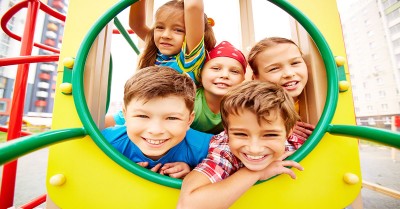
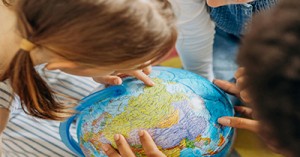
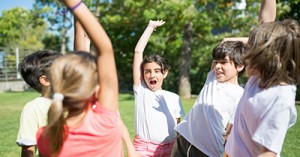
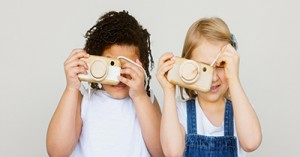
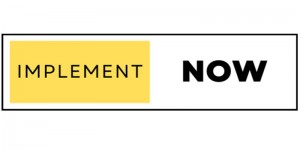
 As an Educator in Australia, your pay rate falls under the Children’s Services Award 2010. This award states the minimum amount that an employer can
As an Educator in Australia, your pay rate falls under the Children’s Services Award 2010. This award states the minimum amount that an employer can When working as a qualified Early Childhood Teacher (with a university degree) within a service, your rate of pay will come from the Educational Services
When working as a qualified Early Childhood Teacher (with a university degree) within a service, your rate of pay will come from the Educational Services When working as a Diploma Qualified Educator your pay rate is from the Children's Services Award 2010. This Award states your minimum rate of pay
When working as a Diploma Qualified Educator your pay rate is from the Children's Services Award 2010. This Award states your minimum rate of pay When working as a Cert 3 Qualified Educator, your pay rate is from the Children's Services Award 2010. This Award states your minimum rate of
When working as a Cert 3 Qualified Educator, your pay rate is from the Children's Services Award 2010. This Award states your minimum rate of Educational Leaders play a crucial role in their early childhood service by ensuring that the educational program aligns with best practices and supports the holistic
Educational Leaders play a crucial role in their early childhood service by ensuring that the educational program aligns with best practices and supports the holistic In early childhood education and care, ratios are more than a technicality—they are a frontline safeguard. Every child deserves responsive supervision, emotional connection, and developmental
In early childhood education and care, ratios are more than a technicality—they are a frontline safeguard. Every child deserves responsive supervision, emotional connection, and developmental With the new national child safety reforms kicking in on 1 September 2025, early childhood services like yours have a real opportunity to lead the
With the new national child safety reforms kicking in on 1 September 2025, early childhood services like yours have a real opportunity to lead the Here’s a comprehensive Mobile Phone and Smart Watch Policy tailored for early childhood education and care (ECEC) services in Australia, aligned with the latest 2025
Here’s a comprehensive Mobile Phone and Smart Watch Policy tailored for early childhood education and care (ECEC) services in Australia, aligned with the latest 2025 The Sea of Fish Challenge is a national initiative that invites children, educators, families, and communities to create and display fish artworks as a symbol
The Sea of Fish Challenge is a national initiative that invites children, educators, families, and communities to create and display fish artworks as a symbol Across the early childhood education and care sector, educators are sounding the alarm: current staffing ratios are insufficient to deliver safe, meaningful, and developmentally appropriate
Across the early childhood education and care sector, educators are sounding the alarm: current staffing ratios are insufficient to deliver safe, meaningful, and developmentally appropriate